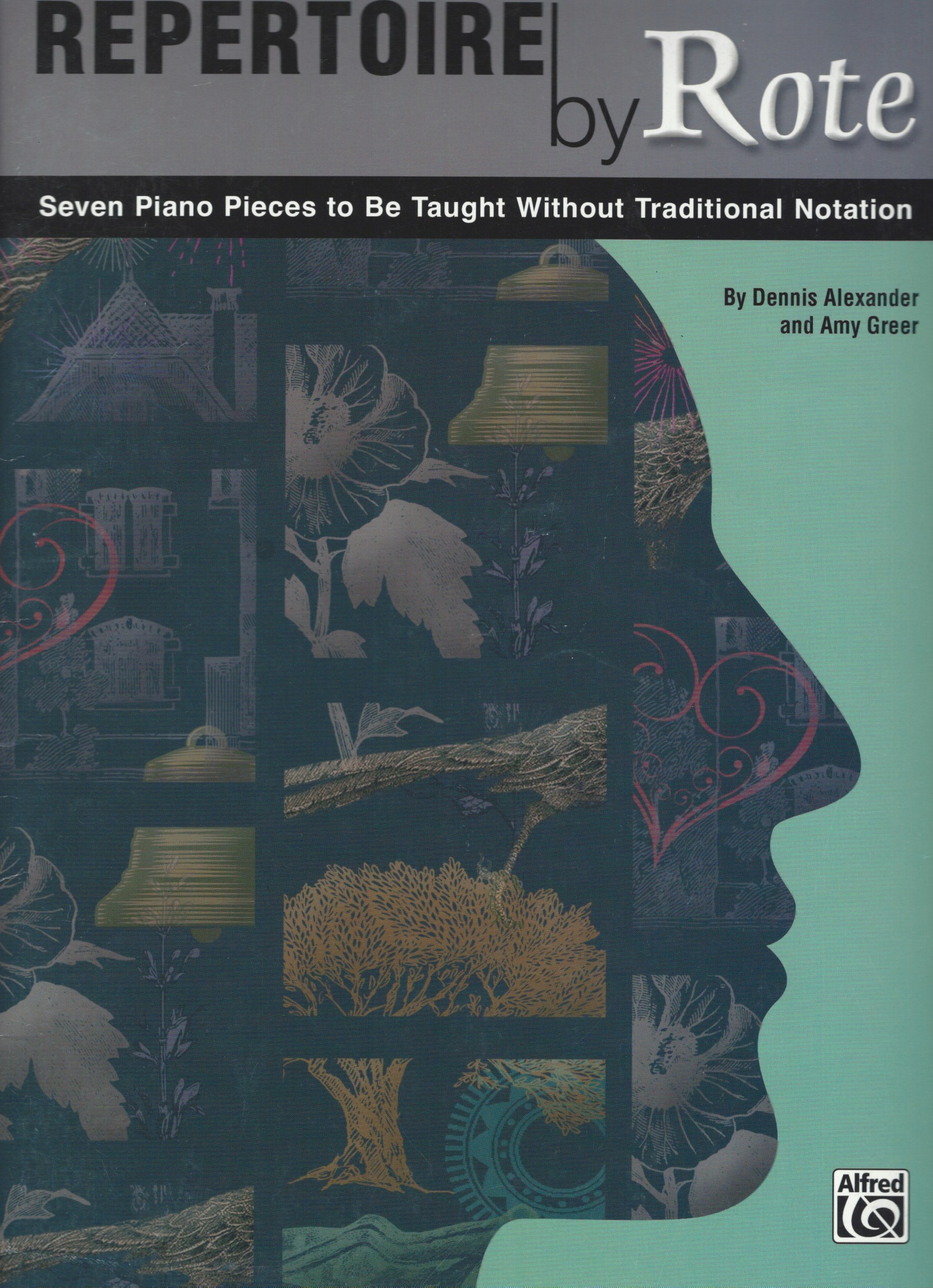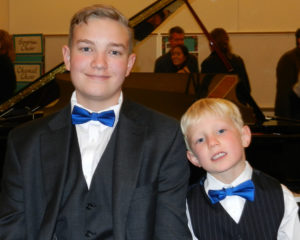The Joy of Teaching a Rote Piece - by my fellow author Amy Greer

If you haven't had a chance yet to see "Repertoire by Rote" yet, a new publication that is co-authored by friend and colleague Amy Greer and myself, you'll find this article inspiring and lots of fun to read. Amy is a superb teacher and pianist here in Albuquerque, and she has a weekly blog on her website "TenThousandStars.net" where she shares all kinds of wonderful and inspiring ideas from her teaching experiences. This article will give you a little idea of just how helpful it can be to choose a good rote piece for a young student, and then pair that student up with an older student in the studio! I know you'll enjoy reading it. In our book, you'll find SEVEN wonderful pieces to teach to elementary level students. The collection is sequenced from the easiest pieces to the most difficult, with songs ranging from simple repeating patterns on black keys to scale-based pieces that use the entire keyboard. With each piece, you'll find step-by-step instructions on how to teach it using minimal lesson time. Think of this collection as a supplement to other pedagogical methods-- a resource for interesting, motivational music that will help students acquire the rhythmic, expressive, and technical skills they need to become well-rounded musicians. Many thanks to Amy for giving me permission to share her article with you.

It's not the students playing Beethoven and Chopin that are challenging when it comes to choosing repertoire for the studio recital. It's the kids playing, well, nothing much at all.
When students are barely finding middle C and who have only just begun to learn to read simple off-staff notation in their early method books, choosing a piece to play for their first recital can be difficult. The first piece I ever played from a music book was from the infamous John Thompson'sTeaching Little Fingers to Playcalled 'Birthday Party.' There are three notes: C, D, E. The music goes up and down, always by step. It's very boring, really.
(I much preferred the second piece in the book 'Sandman's Near.' It also uses three notes-- C, B, A -- but has a nice minor sound. Kids LOVE minor.)
That very first recital is tough all the way around. There is so much to learn: how to walk up to the piano with purpose, how to bow, what to wear. And then there's the issue of choosing that perfect recital piece when the piano world pretty much consists of C, D, E (or if you're really lucky, C, B, A). Time for a good rote piece, I say.
Although I spent years in the closet with my rote teaching, those days are over. Everyone, it seems, is talking about the benefits of teaching by rote, particularly in those early beginning years of piano study. Check outthis podcastwithDennis Alexander, my co-author ofRepertoire By Rote. Dennis is being interviewed by a charming and very smart Austrialian bloke, Tim Topham, on his podcast about creative piano teaching. (Thanks for the fantastic shout-out, guys!)
This fall I have only one beginning student. All my other kids are way beyond the likes of 'Birthday Party' and 'Sandman's Near.' While we still use rote pieces in our work, it's no trouble to pick an interesting recital piece. The trouble is narrowing it down to a single recital piece.
But after only a couple months of piano lessons, five-year-old Nathan doesn't have a large repertoire to choose from. He is smart and eager to learn, but years away from Chopin and Beethoven. Even Dennis Alexander's 'Giggle Bugs,' a great favorite in the studio, is well out of his reach. 'Oh, Purple Sage,' one of Dennis' and my early rote pieces, is just about right, however.
Nathan loves 'Oh, Purple Sage.' Convincing him to play it on our November recital was no problem, but who to play the teacher's duet part with him?
'Would you like to play it with your dad?' I asked him. 'That would be fun, right?' He shook his head. 'How about your mom?' No. 'Me? Would you like me to play the duet with you at the recital?' Nope. 'Someone else?' Nathan is tiny; his legs swing high above the floor when he sits on the piano bench. He is very shy and goes entire lessons without uttering a word to me. Nevertheless, it is clear he has someone specific in mind.
'Jonathon,' he told me.
Jonathon is a sophomore. He is tall and good-looking. He has taken piano with me since he was a little guy just Nathan's size. Jonathon has a lesson right before Nathan's and every week the two kids cross paths in the sunroom. Of course, I thought, Jonathon. What little one wouldn't love to share a bench, not with a boring adult, but with a cool big kid?
(The pedagogue in me must insert at this point that this plan was equally good for Jonathon. What big kid isn't helped by taking up a leadership role with a younger person? This is, after all, the whole Montessori concept in action.)
So the following week I brought up the idea to Jonathon. I explained that Nathan needed a partner and had asked specifically for him. 'You okay with this?' I asked.
Jonathon had one question, 'Would I still play ‘Puck'?'
'Puck' is a popular intermediate-level piece by Grieg. Jonathon had picked this piece some months before and was playing it well. I knew he wasn't looking to get out of his own performance. What he was really saying was:Okay, I'll take one for the team here even if I give up my own thing.
In a career of favorite teaching moments, that was another one.
'Nope,' I told him. 'You are definitely still playing ‘Puck'.'
And so it came to pass, Nathan and Jonathon and 'Oh, Purple Sage' (Written that way it sounds almost biblical, doesn't it?). You can watch their performance at the studio recitalhere.
Please note the matching bow ties.
